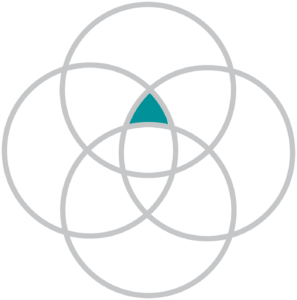
At the intersection of technology, mission, and people is NASA’s need to continuously redesign how we accomplish our work while, at the same time, preserving our core values and ethos of what makes NASA uniquely NASA. Today’s complex and interconnected work environment requires a different approach to sustain organizational success. Organizations face the growing imperative to redesign themselves to move faster, adapt more quickly, facilitate rapid learning, and embrace the dynamic needs of an increasingly diverse workforce. As such, organizations are shifting toward structures built for agility and a network of teams that have overarching goals tied to organizational performance and productivity. Agile organization designs foster autonomous teams able to engage in fluid work arrangements based on the nature of the work; organizations are afforded the ability to quickly mobilize “talent to task” to achieve mission success (2017 Global Workplace Trends – Sodexo, 2017).
INSIGHTS
A trait that unquestionably arises in any conversation about the the Future of Work is agility. From the agile workforce to the agile organization, the future is marked by constant waves of change and new approaches to navigate the currents with an agile posture. This persistent fluctuation of everything is being largely driven by the rising rate of technological change. In contrast to the rapid pace of technology are organizations, individuals, and, particularly policy, which drastically lag in keeping up with unprecedented change (Hagel & Schwartz, 2018).
Organizations are responding with structural redesigns and process reengineering. The designs of tomorrow demonstrate greater awareness that boxes and lines no longer visually depict the way organizations operate. The attempts to draw out reporting lines do not authentically represent how real work gets done and decision-making transpires. Future designs gear toward networks—teams of teams—and attempt to understand the connections and relationships that matter most to organizational performance and productivity. Pushing less for structural approaches and building more toward shared platforms is becoming a best practice rather than the far-reaching goal (Deloitte, 2018). Regardless of the final construct, designing for agility creates a stable environment for structured flexibility.
Individuals are responding with demands for greater work–personal life balance and wellness while simultaneously building greater capacities to manage change and increase resilience; rising Generation Z highlights such capacity building with natural tendencies toward self-reliance and entrepreneurship (Merriman, 2015). The workforce of the future thrives in flexibility and, as noted, organizations are responding in kind with structural redesign while expecting agile reciprocation.
CHALLENGES
NASA was designed for efficiency and effectiveness in the 1960s and 70s around its Space and Research Centers. This decentralized model fed silos of Center-centric cultures, missions, processes, and infrastructure all built to optimize services and results for the Center construct. And the system, processes, policies, and regulation that serve as the foundation for the NASA of today is collectively based on the industrial work of the past. As work requires more cross-Agency collaboration and pressures increase for NASA Centers to share resources and information horizontally across the enterprise, Center-centric models inhibit these exchanges and result in costly duplication. As budgets have become tighter, data more available, and operations oversight more detailed, NASA, like many Agencies, is being asked and is expected to run like a business. Few incentives today promote cross-Agency engagement to improve efficiencies or encourage behaviors that support a shift towards the NASA enterprise operating model, or a “One NASA” culture sought by the Agency.
OPPORTUNITIES
NASA must seek to design a talent-based organization (as opposed to position-based) driven by teams empowered to accomplish mission goals. As NASA has embarked on a new operating model where mission work is shared and accomplished across Centers, where technology and automation are replacing manual and labor-intensive processes, and where requirements now rely on the private sector for mission accomplishment, the fundamental organizational design and flexibility of our workforce must be structured for speed, agility, and adaptability to enable NASA to compete in today’s global environment.
Newly conceptualizing how work is accomplished at NASA requires an understanding of the work. With this understanding, NASA may construct a view of the current network and social architecture of the organization to explore the current structures, dynamics and overarching decision-making practices. This view is used to map teams to tasks, coinciding with the establishment of principles and practices for matrixing and collaborating to achieve designated goals. The success of team networks for NASA largely hinges on cataloging our peoples’ talent, crafting effective team engagement practices, leveraging top talent and rising leaders to guide team performance, and aligning performance outcomes to mission goals.
About the Authors
Nick Skytland | Nick has pioneered new ways of doing business in both government and industry for nearly two decades. He leads the Future of Work initiative at NASA and is the Agency Talent and Technology Strategist in the Talent Strategy and Engagement Division within the Office of the Chief Human Capital Officer (OCHCO).


